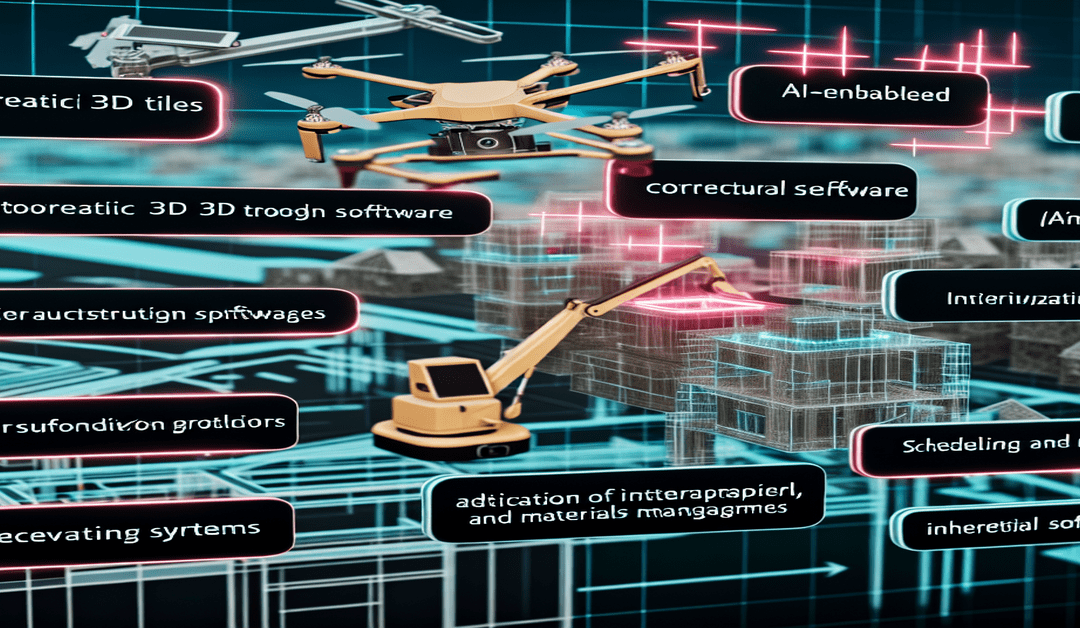Revolutionizing Geospatial and AEC Industries: Groundbreaking Collaborations and Technological Advancements
The geospatial, 3D, and Architecture, Engineering, and Construction (AEC) industries are witnessing a transformative era, driven by cutting-edge collaborations and innovative technological advancements. As industry professionals, it is crucial to stay informed about these developments, as they have the potential to reshape the way we visualize, design, and construct our built environment.
Esri and Google Maps: Elevating 3D Visualization
One of the most exciting collaborations in the geospatial realm is the recent partnership between Esri and Google Maps Platform. This groundbreaking integration brings Google’s **Photorealistic 3D Tiles** into the ArcGIS suite, empowering users to create stunningly detailed and immersive maps. The combination of Esri’s robust GIS capabilities and Google’s advanced 3D visualization technology opens up new possibilities for urban planning, infrastructure management, and environmental analysis.
Trimble’s Tekla Software: Empowering AEC Professionals
In the AEC sector, Trimble continues to lead the charge with its latest updates to the Tekla software suite. The introduction of **AI-enabled tools** in Tekla Structures promises to revolutionize productivity and streamline fabrication drawing creation. These intelligent features leverage machine learning algorithms to automate repetitive tasks and optimize design processes, allowing AEC professionals to focus on higher-value activities.
Moreover, enhancements to Tekla Structural Design and Tekla Tedds demonstrate Trimble’s commitment to seamless workflows and interoperability. The improved integration with **Autodesk Revit** ensures a smooth exchange of data between design and fabrication teams, fostering collaboration and reducing errors.
Advancements in Surveying and Navigation
The surveying and navigation domains are also experiencing significant advancements. Trimble’s collaboration with Xona Space Systems aims to integrate Trimble correction services with Xona’s PULSAR navigation service, set to commence in 2027. This partnership holds the potential to revolutionize precision positioning and navigation capabilities, benefiting industries such as surveying, agriculture, and autonomous vehicles.
Meanwhile, Virtual Surveyor has introduced Basic Topographic Design tools to its smart drone surveying package, empowering users with enhanced capabilities for terrain modeling and analysis. These advancements in surveying technology enable professionals to gather accurate and detailed data more efficiently, facilitating informed decision-making and streamlining project workflows.
Geospatial Data Accessibility and Enrichment
Accessibility to high-quality geospatial data is crucial for mapping and analysis projects. Golden Software has taken a significant step forward by allowing users to download georeferenced Google aerial and satellite images directly into their mapping software. This integration simplifies the process of acquiring up-to-date imagery and enhances the accuracy of geospatial analyses.
Furthermore, Precisely has introduced geo addressing and data enrichment solutions via the Snowflake Marketplace, making it easier for organizations to access and leverage valuable geospatial data. By integrating these solutions into their existing workflows, professionals can gain deeper insights, make data-driven decisions, and unlock new opportunities for growth and innovation.
Embracing the Future
As the geospatial, 3D, and AEC industries continue to evolve, it is essential for professionals to embrace these advancements and adapt to the changing landscape. By staying informed about the latest collaborations, technological innovations, and industry trends, we can position ourselves at the forefront of this exciting era.
The integration of **AI**, **machine learning**, and **advanced visualization technologies** is transforming the way we design, construct, and interact with our built environment. These advancements not only improve efficiency and accuracy but also foster collaboration and enable us to tackle complex challenges with greater confidence.
As we move forward, it is crucial to actively engage with these developments, share our experiences, and contribute to the ongoing dialogue within our professional communities. By doing so, we can collectively shape the future of the geospatial, 3D, and AEC industries, driving innovation and creating a more sustainable and resilient built environment.
#Geospatial #AEC #3DTechnology
-> Original article and inspiration provided by geoweeknews.com
-> Connect with one of our AI Strategists today at ReviewAgent.ai

